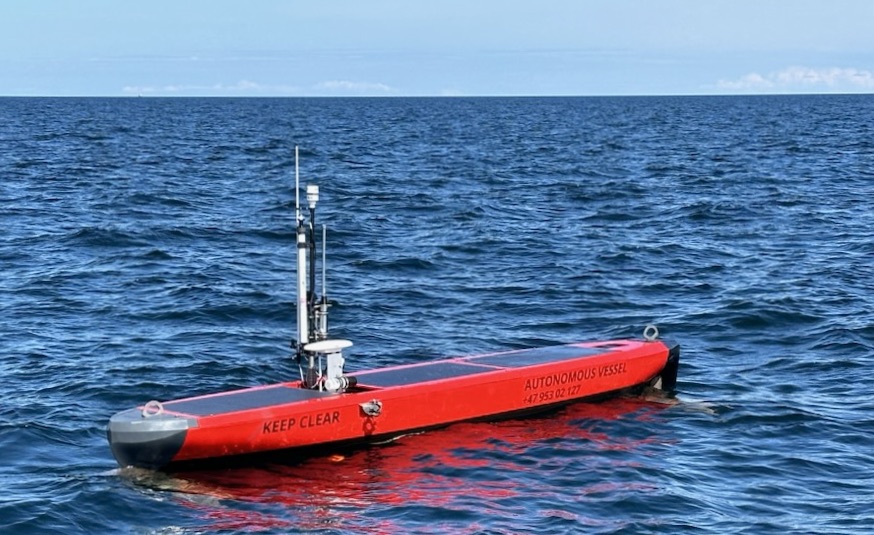Autonaut
Background
AutoNaut is a self-powered unnmanned surface vehicle (USV) designed to be a cost effective, low man-power data collection platform, with zero emission, extreme persistence and capability of surviving extreme weather conditions. Zero emission is achieved solely by wave and solar power. A patented Wave-propulsion Technology converts energy from the pitch and roll of the waves. AutoNaut is equipped with spring-loaded foils attached to the struts under the keel. These foils exploit the wave-induced vessel motion, caused by waves lifting the vessel up, out of the water and dropping it down again, to generate the forward propulsion. Under very calm weather conditions when the waves cannot alone propel the USV, an electrical thruster on the stern strut can be used. This USV is the 5-meter version with max speed up to 3 knots, depending on the sea state.
It is equipped with various scientific sensors that are used to e.g. calibrate pictures taken from the HYPSO satellites, detect algae blooms, or take discrete water samples (can detect the DNA of a fish that swam by! 🤯)

Scope
There are various challenges with the AutoNaut that requires attention, so it is possible to steer this project in different directions:
- power management: the vehicle has limited energy available. How should it be prioritized?
- link management: the vehicle operates in regions with varying connectivity (4/5G vs iridium, poor vs good connection). How what data transfers should be prioritized?
- Control: the AutoNaut moves very slow (~0.5 m/s) and experience large environmental forces (wind, wave, current). How can it be controlled efficiently?
- How can online performance- and risk-forecasting be used to autonomously plan and re-plan marine mapping and monitoring missions, such that USV operations are resilient and still meets the mission objectives as far as possible?
Possible extensions for the master thesis include
Contact
Contact supervisors Kristoffer Gryte and Tor Arne Johansen
